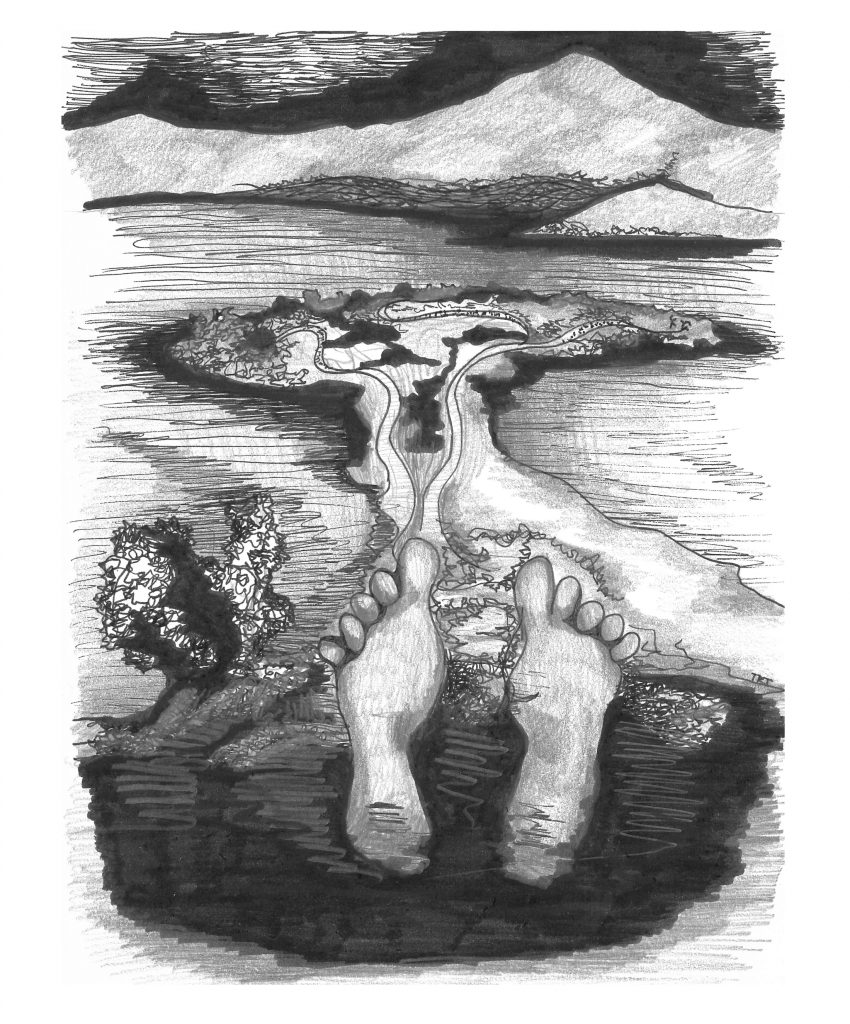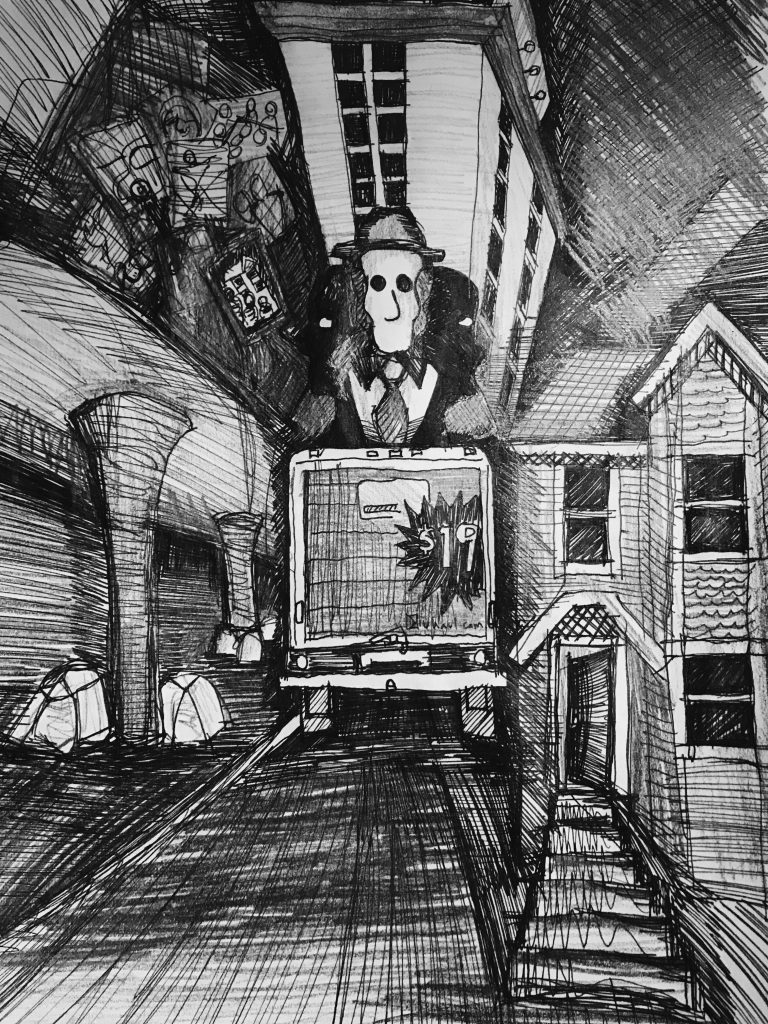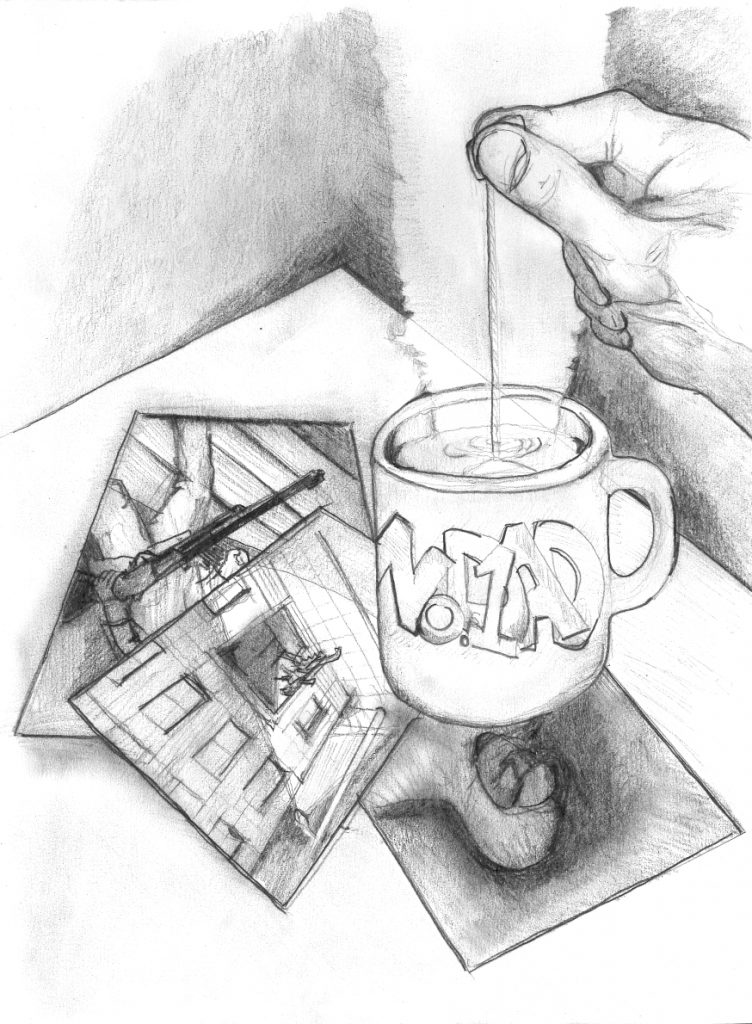In July, Rick Paulas generously donated hundreds of copies of his book, Eastern Span, for Street Spirit vendors to sell along with their papers. We sat down with Rick to talk about his novel, and why he wants it to be sold by our vendors.

I could describe Eastern Span in two ways. I could tell you that it is a noir novel set in 2013-14 Oakland about a gig-economy sleuth named Pug, on a meandering hunt to find a friend who has mysteriously disappeared. Along the way, he stumbles upon a housing conspiracy wrought by the kind of evil developers that we all suspect exist, but have never actually seen in the light of day.

I could also tell you that it is a portrait of Oakland, frozen in time. Pug drinks at the city’s classic dives, like Ruby Room and The Avenue. He parties at underground house shows at Fallout Shelter. He visits at long-standing homeless encampments, such as Here/There. And he watches as houses are knocked to the ground, scaffolding is erected, and neighborhoods are devastated by gentrification. Readers who are familiar with Oakland can breathe in a scene that feels like home. Readers who are not can get a taste of the city through the author Rick Paulas’s vivid descriptions, such as “the massive white harbor cranes loom[ing] in the background like pallbearers waiting for their cue.”
Both descriptions would be true.
Rick Paulas was born in Oak Forest, Illinois—a suburb near Chicago. He lived in Oakland for six years before moving to New York City in June. While living in Oakland he worked as a freelance journalist who wrote about the city around him. Often, he notes, this led him to stories about the housing crisis. “That’s really THE story of the Bay right now,” he told Street Spirit. Most recently, he published a story about the history of the Albany Bulb in Curbed, and a profile of East Bay lawyer Osha Neumann in the San Francisco Chronicle.
Eastern Span is Paulas’ debut novel. It is being distributed by people who sell Street Spirit in the East Bay, and those who sell Street Sheet in San Francisco. Why? We spoke to Paulas to find out. (Our conversation has been edited and condensed.)
Alastair Boone: I read on Twitter that having Eastern Span distributed by street vendors has been a dream of yours since before you finished writing the novel. Why?
Rick Paulas: Whenever I write about homeless folks or encampments, I always have a squishy bit of guilt, in that I’m literally making money off of them—just freelance rates, but still— while they’re still sleeping outside. Maybe it’s Catholic guilt. Anyway, this was just a way I could pay back a little.
That said, I wouldn’t say this is entirely altruistic. I want people I don’t know to read this, and that means distribution that reaches behind my social sphere. Others use the publishing industry, but working hard to convince people they can make a buck off of you isn’t super compelling to me for this project. With those two goals, this just felt logical.
Oh, also: As far as I’m concerned there is no better source of news than street papers. No economic incentive by advertisers to deal with, a completely underrepresented group of writers and journalists, and a perspective you can’t get anywhere else. What else is good writing or journalism supposed to be?
AB: What inspired you to write Eastern Span?
RP: Mainly, two big events happened at the end of 2016: Trump and the Ghost Ship fire. They seem like distinctly separate things, and largely are, but to me they were entwined within some of the same systems—Trump’s career as a blowhard real estate mogul who spent his career seeking ways to raise property values, often by kicking out poor minorities; the lack of artistic, “free” spaces left in the Bay due to landlords raising their property values by converting to lofts left Ghost Ship as one of the few gathering places left.
Beyond those, I’ve been reporting on homeless evictions—for publications, or just for Twitter sometimes— and simply living in the ether or friends having to move out of town because they can’t afford it. Once I figured out I wanted to write about the effects of the commodification of property, I wanted to trick people into reading it, hence, the noir plot.

AB: Your book really grounds the reader in Oakland. Oftentimes, it grounds the reader in Oakland’s homeless encampments. How come Oakland’s encampments are so central to the geography of Eastern Span? Why not just focus on house shows or squats to convey the underground scene?
RP: As far as I can tell, it’s all interconnected. The system that’s pushed artists into underground spaces and squats is the same one that’s evicted (often minority) low-income tenants from their homes is the same one that answers the complaints of property owners by evicting mutual-aid encampments without giving them anywhere else to go. The encampments, particularly “Here/There,” are so out in the open that I felt it’d give the reader, presumably local, more grounding to know where the action was taking place.
I suppose, if the point of any writing is to illuminate a perceptive or way of seeing, my goal with this was to provide a pair of glasses readers could hold up as they viewed the city. I’d love for someone to be reading this on the BART, look out the window, and see a description of a building or area or one of those shipping cranes I was trying to describe.
AB: Given the prevalence of encampments in your novel, the word “homeless” does not appear very often. Is there a reason for this?
RP: I wanted to present people as people, not as part of a category, which inherently comes with preconceptions of how they got that designation. I suppose that’s why I stayed away from the term for the most part.
AB: There is hand drawn artwork throughout the novel. Who did you commission to make the art?
RP: Most were friends or Twitter contacts, and again, it was an attempt to get people to pick up the damn book. It seems like a book with illustrations would sell better than some random book? But also, I like working with people. It’s lonely out there as a freelancer! And inspiring your friends to dig into their artistic side and help out with your project is basically the dream, isn’t it?
AB: One of my favorite things about Eastern Span is how it describes the many geographies of Oakland. Lots of the places remain local fixtures—like The Alley. Some are ghosts of the past, like Esther’s Orbit Room. And then some are places that are constantly changing and evolving, like the Here/There encampment, the Albany Bulb, the unnamed cocktail bar undergoing renovations, and the many unnamed encampments that crop up and have surely disappeared. To me, this helps the book feel alive, like it’s living and breathing. In your mind, how do all these overlapping worlds contribute to the Oakland that is presented in Eastern Span?

RP: I don’t know that there’s a single setting in the book I didn’t seen with my own eyes, even if that place is under a pseudonym in the book. The plot machinations of the book are obviously fiction, but I don’t know a single description of a person or place that I made up. Obviously, the effect of that quasi-journalistic approach captures details of a single moment in time, which again was the point. The cocktail bars undergoing renovations are now staffed and open, the encampments have been pushed to wherever they are next. This was 2013-2014, and whatever stage of gentrification that was. We are now living half a decade past that.
Okay, so why did I decide to write it that way? Over the past few years, I’ve really come to get obsessed with the study of economic geography, essentially how capitalistic forces and investment shapes our geographic landscape. Like, why artists are known as “the shock troops of gentrification,” how red-lining disinvestment works, why BART decided to plow through a low-income African-American community to build its rail line, and which in turn, killed the Seventh Street jazz scene represented by Esther’s. That kinda stuff.
For a wide variety of reasons, the Bay seems like ground zero for that kind of examination now, what with the various municipalities jockeying for supremacy while the world’s investment floods into the area via tech capital. So, to capture some of that, I really, desperately wanted to get the geographical details right.
AB: What do you hope readers will take away from your novel about Oakland? What do you hope they will take away about homelessness in Oakland?
RP: I want readers in Oakland (and the Bay, and all over the country really), to become more interested in their own local city. So much of the media now is dominated by whatever New York determines is “news,” or by Trump just sucking up all of the bandwidth, that people tend to overlook what’s happening in their own damned backyard now. If I could get one person to shift their funds away from supporting the New York Times to supporting a local journalist or independent enterprise in the Bay, that’d be a big win for me.

In terms of homelessness, I want the housed to break down their self-imposed barrier when it comes to seeing the houseless. This sense that people so often walk past other people without any kind of acknowledgement, as if living on two planes of existence. A fictional book by some random dude isn’t going to erect the supply of public housing that’s needed to break this cycle, but maybe it can get some folks to see homeless folks as, you know, people. People that haven’t just been lazy, or didn’t work hard enough, or are weak because they’ve allowed a drug addiction to take over. But people that have been subject to a system that, frankly, can be changed. I suppose that would be my hope.
In Dialogue is a column in which Street Spirit speaks with community leaders.
Alastair Boone is the Director of Street Spirit and a beat reporting fellow for KALW covering homelessness.
